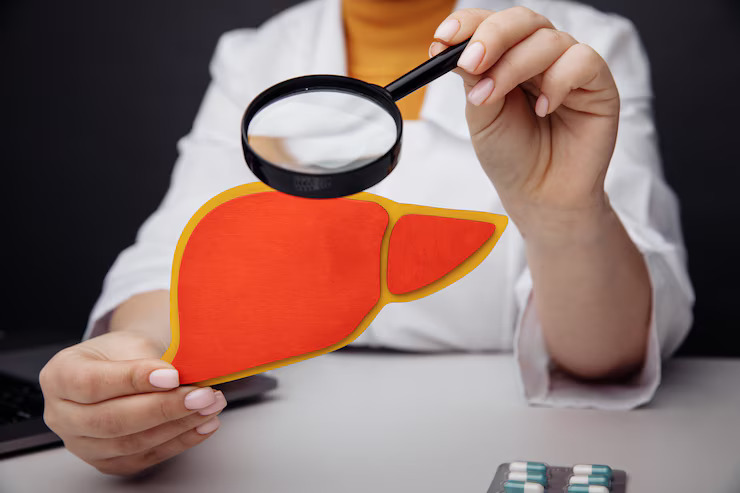Hardened, concentrated bile particles called gallstones can form in your gallbladder or bile ducts. Gallstones are bile stones because the word “gall” denotes bile. It’s your bile bladder or gallbladder. Bile is kept there for later use. Your bile ducts transport the bile produced by your liver to the various organs in your biliary tract. The Gallbladder Surgeon in Ludhiana uses the term “cholelithiasis” to describe the condition of having gallstones. “Litiasis” denotes the formation of stones, while “chole” also indicates bile. You won’t necessarily have any issues if you have gallstones. Many people are not aware that they have stones. However, if gallstones begin to move through your biliary tract and become lodged someplace, they can become hazardous. They have the potential to obstruct your biliary tract, resulting in discomfort and severe consequences.
SYMPTOMS:
Unless they are stuck and create a blockage, gallstones usually don’t cause any symptoms. The most typical symptoms of this obstruction are nausea and upper abdominal pain. These could arrive and depart or remain. If the blockage is severe or persists for a long period, you may experience other symptoms, such as:

- Sweating.
- Fever.
- Elevated heart rate.
- Discomfort and swelling in the abdomen.
- Your eyes and skin have a yellow tint.
- Light-colored poop with dark-colored urine.
How does pain from gallstones feel?
Gallstones usually cause abrupt, intense pain that can make you feel sick. This is called a gallstone attack. After eating, when your gallbladder contracts and increases the pressure in your biliary system, you may experience it to the fullest extent. It might wake you from sleep. Gallstone pain starts with a peak pain and then slowly fades is called biliary colic.
It comes in episodes that can range in duration from a few minutes to several hours. When and if the stone moves or the pressure eases, the episode comes to an end. The pain is described as severe, piercing, stabbing, cramping, or squeezing. You may find it difficult to remain motionless. If you are suffering from this pain then consult the best Gallbladder Surgeon in Ludhiana.
Causes of Gallstones:
Gallstones develop when the primary components of bile are present in excess. At the bottom of your gallbladder or bile ducts, the extra component becomes sediment, which eventually solidifies into stones. The most prevalent kind is cholesterol stones. The other is pigment (bilirubin) stones. This process may entail a number of components, such as:
Too much cholesterol: To create bile, your liver takes cholesterol out of your blood. The ratios in your bile will be off if your blood contains an excessive amount of cholesterol. Lipids and acids must be balanced for bile to hold everything together. Any surplus will be discarded.
Too much bilirubin: The breakdown of aged red blood cells produces bilirubin as a byproduct. If you have a blood condition that causes too many red blood cells to be destroyed, or if your liver is in some way compromised and has trouble converting its typical load of bilirubin into bile, you may have an excess of bilirubin.
Gallbladder Stasis: “Stasis” is an inactive state. Bile is more prone to create sediment if it is not being efficiently moved through your biliary tract by your gallbladder or bile ducts. It’s possible that the chemical signals that tell the muscles to move aren’t working properly.

Gallbladder stone treatment in ludhiana:
- You won’t require treatment for gallstones if they never cause you any difficulties. Your doctor will want to remove all of the gallstones, not just the blockage if they produce a blockage in your biliary tract. Gallstones have a significant probability of causing blockages again after they have already occurred. The majority of patients who require gallstone treatment will have surgery to remove the stones. The surgery is the only method to make sure gallstones won’t bother you again. However, there are other therapies, such as medicine and other procedures, that you can attempt if you are unable or unable to have surgery.
- The only effective long-term gallbladder stone treatment in Ludhiana is gallbladder removal or cholecystectomy. One of the most frequent operations carried out globally is often a laparoscopic procedure. It is possible to lead a healthy life without a gallbladder. From your liver, bile will now travel directly to your small intestine. Sometimes, patients who require gallstone treatment are not in a safe enough state to have surgery to remove their gallbladder. Cholecystostomy is one option in these situations. A catheter is inserted into your gallbladder to empty it during this simple surgery. The gallstones that are currently inside can be removed by it.
Conclusion: Gallstones are common and most people are never bothered by them. These are dangerous if they once start to move. These tiny pebble stones can do a lot of damage when they get into tight spaces in your delegate biliary system. The pain of gallstones gives you an alarm sign that you should take recommended treatment like surgery.


Leave A Reply